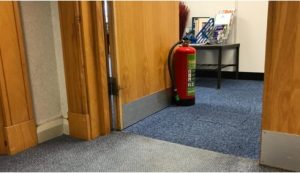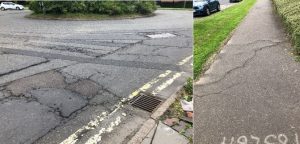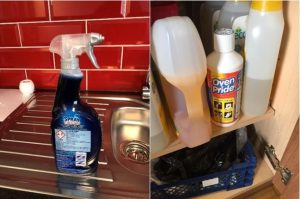Top 5 hazards in Commercial Buildings

I inspect a range of different workplaces, but lately I’ve had quite a few jobs inspecting commercial buildings – I’ve put together a quick list of the top five hazards I come across most frequently, alongside some quick fixes to help:
Missing records
This is number one on my list as keeping appropriate records is fundamental, and a legal requirement. Some records have standard retention periods; which are quite short others (such as Asbestos) must be kept for fifty years! It’s also number one because it’s frustrating when the work has been carried out but not documented, or the records have gone missing.
These records should be:
- Easily accessible
- Retrievable in a reasonable timeframe
This means that when I’m on site, or shortly afterwards, I should be able to access and review your paperwork – if it can’t be evidenced then it’s difficult to prove it ever existed.
Housekeeping
The presence of clutter (sometimes combustible) in communal areas is one hazard I come across often in a variety of premises, including commercial buildings. It’s easy for one box of paperwork to turn into a general dumping ground in a short period of time. Below is an image of a storage area; this is a prime example of paperwork that needs to be stored properly (either on or off-site) or destroyed.

Fire
To comply with the law and to keep your business and employees safe, you must have an up-to-date fire risk assessment in place that reflects the nature of your business and your workplace. I often see:
- Unsuitable fire doors – these can include those wedged open, those with broken self-closing devices, and ill-fitting doors that require adjustment. Fire doors must be closed, and damage identified and rectified in a timely manner.
- Blocked escape routes – fire escapes must be kept sterile at all times. Check out this blog for further information.
- Insufficient training – this can involve those who were trained initially but never provided refresher training, a general lack of any Fire Marshals/Fire Wardens, or an uneven spread of Fire Marshals across working patterns, and a lack of fire drills.

Exterior & Grounds
When looking at the exterior of commercial buildings we often see potholes and cracked pavements in lower frequented areas, but it’s the responsibility of the Managing Agent, Owner, or Landlord (depending on the tenancy agreement) to ensure that every traffic route is suitable for purpose. This means that the road must be in a fair state of repair, maintained appropriately and provide adequate traction and grip for both drivers and pedestrians.
The HSE has excellent guidance available for vehicle use at work which covers site safety and risk assessments.

Hazardous Substances (COSHH)
Control of Substances Hazardous to Health, or COSHH, is the law regarding the control of harmful substances. This includes a wide range of products, ranging from those easily identifiable as a hazard such as bleach or nail polish remover, to those that can be overlooked such as some types of glue or even concentrated washing up liquid.

During my inspections I open all kitchen and cleaning cupboards; all chemicals should be securely stored away to prevent unauthorised access and Safety Data Sheets must be readily available.
Appropriate PPE must be provided to those working with hazardous substances and workers must understand what to do in case of exposure.
Need Lewis to give you a hand with your Health & Safety? Get in touch with him today.
Our content is correct at the date of publishing, but should not be taken as legal advice, and our articles don’t replace Risk Assessments. Armour will not be held accountable for any legal actions the reader may take.

